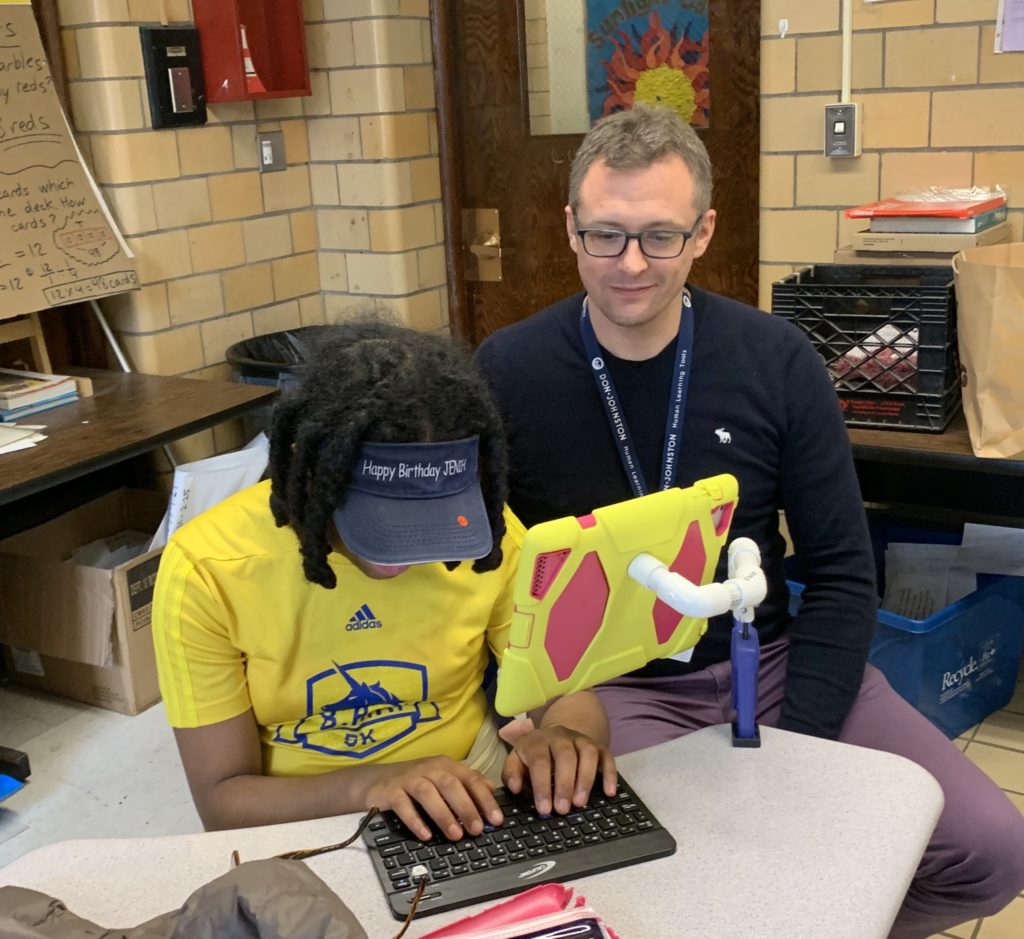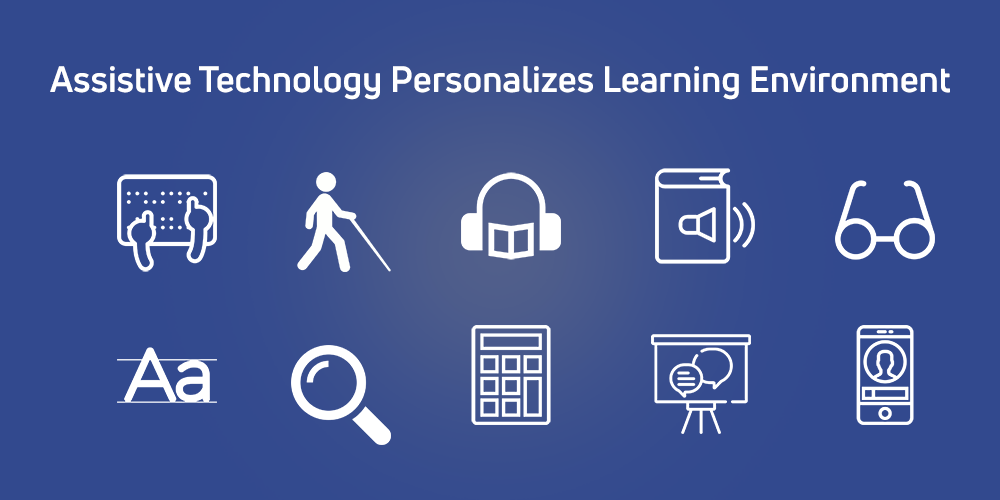Scott Richards shares the low-to-high tech solutions and strategies that help students with disabilities reach their potential
Profile
| NAME | Scott Richards |
| OCCUPATION | Occupational Therapist and Assistive Technology specialist in Boston Public Schools |
| YEARS TEACHING | 10 |
| STUDENTS | K-12 students with visual and motor impairments; specific learning disabilities that affect decoding, spelling, fluency, comprehension, and language delays; and ESL students |
| EMPHASIS | – Deliver remedial work to improve functional motor and visual skills like handwriting, keyboarding, and classroom tool use – Teach executive functioning skills like organization and self-regulation – Adapt classroom environments and curriculum to meet the complex needs of individual students while promoting as much participation as possible |
How does assistive technology help the students you serve?
Assistive Technology includes everything from low tech — desktop easel, word banks, alphabet strips, and reading trackers – to high tech tools. Books on tape, video books (e.g., YouTube, TumbleBooks), and digital text with audio support (Bookshare, Learning Ally, OverDrive) provide multiple means of engagement for students. Digital content provides a wealth of opportunities for teachers to modify and adapt by leveling text or hosting material on a platform such as Google Classroom where additional tools can be used to access and interact with text.
What are some of the biggest obstacles to getting students comfortable with technology?
For younger students, they often haven’t had exposure to technology, so jumping right in to higher tech can be overwhelming. I suggest starting with low tech and introducing higher technologies slowly. For example, teachers can use a projector to display images, videos, and text that complement a class read-aloud. A workstation in the classroom can include a tablet or Chromebook with a learning application for math, science, or reading that all students interact with in a non-threatening way.
For older students, the social element can be a major obstacle. Most students don’t want to appear different than their peers, so throwing a piece of technology at them, or giving them a “different” way of participating in class, is not likely to work. The best ways to support adoption and reduce the risk of abandonment are:

- Always include students in the decision-making process
- Find ways of making technology available to all students in the class
- Normalize the experience for the individual as much as possible
How does Bookshare help your students?
Bookshare is an incredible resource for students. It provides instant access to books and reading materials that they would otherwise have no way of accessing. Having the ability to use it on a Chromebook, tablet, or phone makes it flexible and easy to use. The experience is highly customizable, including changes to font, highlighting, and voice, so students feel empowered to participate in their own unique way.
Can you share a student success story?
A few years ago I did an AT consultation with a special education teacher for a fourth grade student who had just arrived from Jamaica. Her IEP indicated that she had a learning disability in reading. She spoke English, but her reading level was first grade. Her resource room teacher began working on improving her reading skills, but realized that she needed a different way of accessing reading material if she was to become a part of her regular class. Knowing she had no gaps in her comprehension, it was crucial to give her an access point for reading on grade level. The student tried some digital reading and writing tools, including Bookshare, which she adopted immediately. Using a Chromebook with headphones, she enthusiastically began reading, and within a few weeks she was participating in discussions, small group activities, and homework as an equal with her peers.
What advice do you have for teachers and parents?
Start small and simple. Collaborate as a team, and remember that the student is the leader. When a person feels in control, they feel empowered to make decisions and participate. Don’t be dissuaded when things don’t work the first time. It may take several attempts with several different tools before something works.
Scott Richards is an Occupational Therapist and Assistive Technology Specialist in the Boston, Massachusetts, area. He is also a part-time outreach coordinator for Bookshare. You can reach him at scottr@benetech.org


[…] interview was originally published on the Bookshare blog. Interested in more inclusive teaching tips and interviews with students and adult Bookshare […]